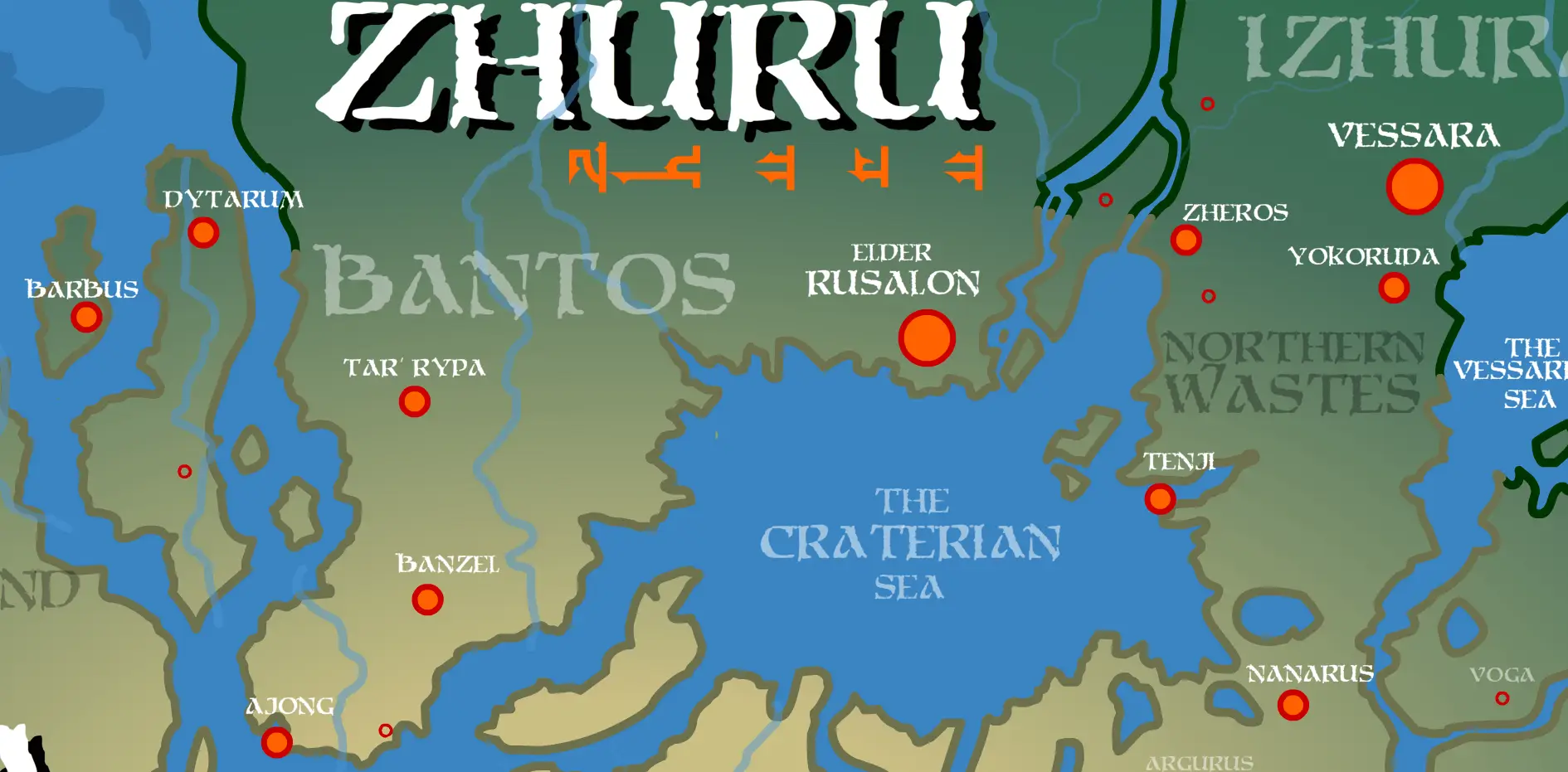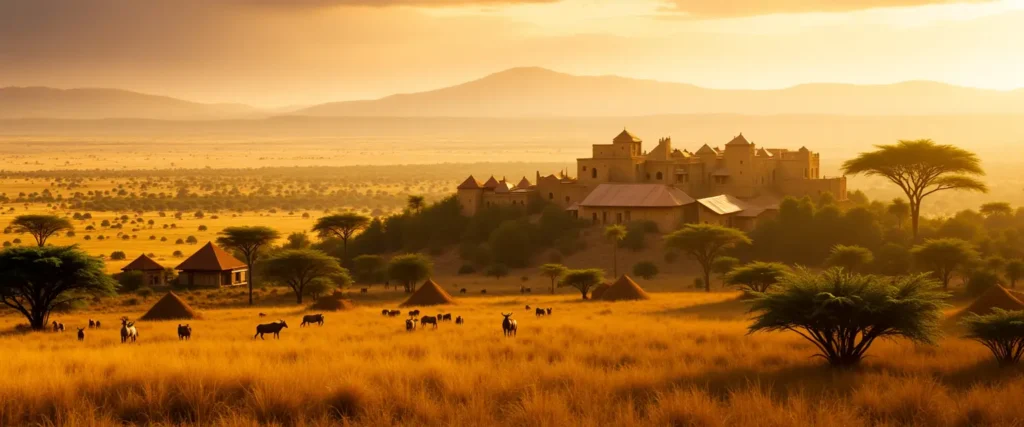
In almost complete contrast to the hyena wastes of the Zhurian East stand the Realms of the Doglands — a loose constellation of citadels and town-states nestled between the ridges of Izhura and the guarded frontiers of the Lions’ territorial dominions.

Where the hyena tribes thrive on terror, filth, and frenzy, the folk of the Doglands labor toward the illusion — and perhaps the first true experiment — of civilization. Their walls are high, their gates fortified, their plazas swept and sunlit. Within, sandstone towers rise over clay-tiled streets; bazaars spill with spice, silver, and textiles traded freely among breeds once enslaved.
The population itself is a breed-born refuge of runaways and freed thralls, their collective memory steeped in the hunger for autonomy. Every law in their realm speaks to the preservation of the self — and the punishment of those who would erase it. Execution and treason are the two pillars upon which their justice rests, and mercy is measured not in pity, but in restraint from cruelty.
Yet for all their civility, they remain a young and precarious nation. The Dogfolk abhor conscription, reject state labor drafts, and refuse to bind service to punishment. Their armies are few, their militia undisciplined, and their reliance on coin and contract makes them slow to rally. They are merchants before soldiers, architects before conquerors, and in that inversion lies both their nobility and their doom.
Still, their hatred of hyenas runs hotter than any forge in Vandyrus. No treaty, no creed, no trade route is ever permitted to cross the filth of those carrion plains. To the Dogfolk, coexistence with Wolves is a cautious truce; with Horses, a mutual respect. But with Hyenas — only eternal war, declared in silence, and fought in every child’s bedtime story.
For mistakes, even noble ones, do not require frequency to accumulate ruin. And the Lions across the western sea, in their cruel provinces of Gamandor, have long delighted in watching fledgling nations stumble — savoring, with almost culinary patience, the pleasure of playing with their food.
What defines the Doglands above all is the memory of chains. Every stone of their cities, every flag that flutters from the walls, every oath uttered in the courts of clay, carries the scent of liberation turned doctrine. They are a people born not from conquest but from escape. Their ancestors were bred and bartered by the empires of old—engineered for obedience, toil, and pleasure—and when those empires fell, the dogs did not forget what was done to them.
Thus, the Doglands hold one law above all others: No Chain Shall Hold Another. It is not a proverb but a warning, and its enforcement is brutal in its clarity. Slavery in any form—by coin, by collar, or by debt—is punished by immediate execution. Those accused of slaving are not granted trial. They are dragged to the pits, bound to the pike, and torn apart for the crowd’s remembrance.
This law extends, with fanatical intensity, to the hyenas. No species is more despised. To the Dogfolk, hyenas are the living memory of their tormentors—the face of the whip, the laughter of the overseer, the stench of the pens. Even one who sets paw within the walls of the Doglands will be seized by mob or militia and cast into the arena, where their death is both ritual and spectacle. The crowd gathers not in celebration, but in defiance, as if to remind themselves that the age of submission has ended.
In the Doglands, every life is owned by itself. Size, breed, and purpose—once measures of design under their masters—now mark only the spectrum of their freedom. The small run messages through the streets; the large guard the gates. The merchants of the tiled plazas speak in many tongues but share one spirit: to build a world where no collar fits, and where the memory of the lash may finally be buried beneath the scent of oil, bread, and sunlit fur.
